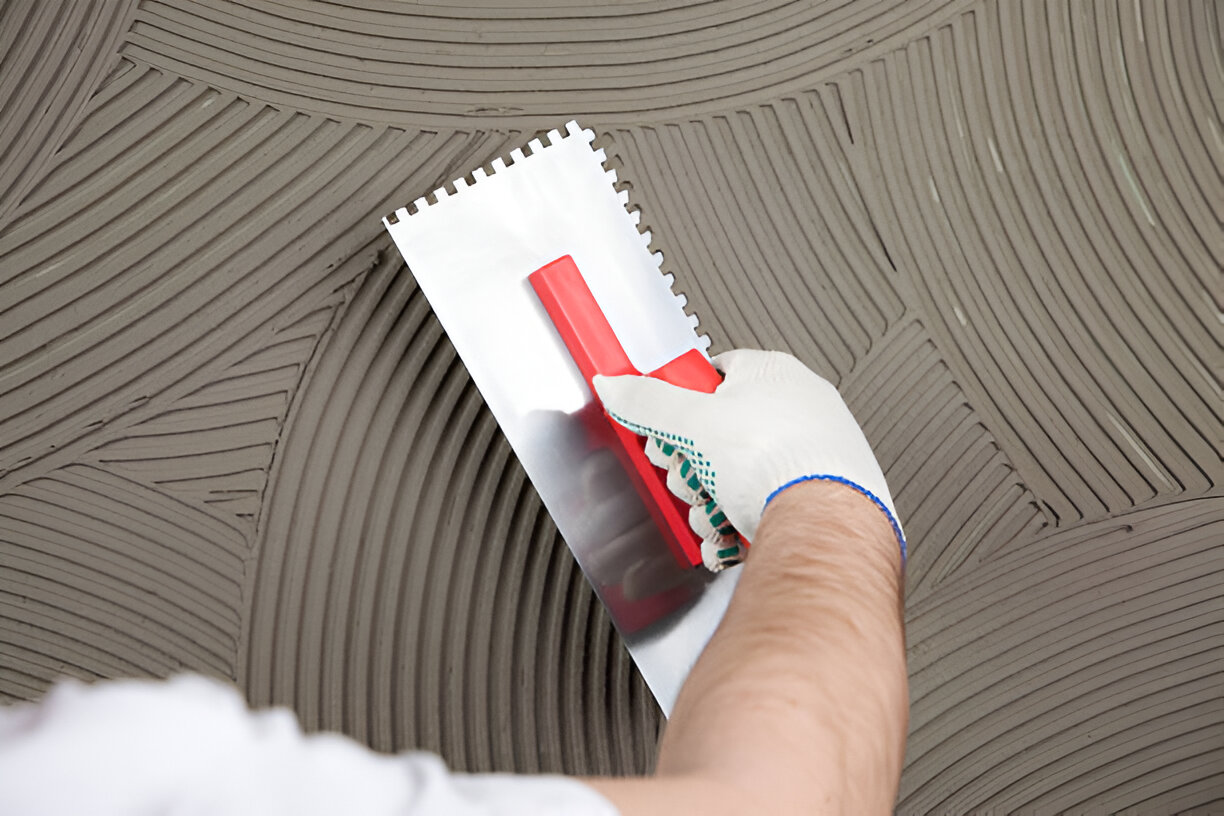Proper tile adhesion is crucial for any tile installation to ensure long-lasting results and maintain the integrity of the surface. Americo Migliore Jr, an expert in tile and stone installation based in New York, has spent years perfecting techniques that ensure tiles stay securely attached to a variety of surfaces. Whether installing tiles in high-traffic areas, bathrooms, or kitchens, proper adhesion prevents issues like loose tiles, grout cracking, or tile lifting. In this article, Americo shares his tried-and-true methods for enhancing tile adhesion to surfaces, ensuring flawless tile installations that stand the test of time.
1. Preparation of the Surface
The first and most important step in achieving optimal tile adhesion is preparing the surface where the tiles will be installed. Surface preparation ensures that the tiles bond securely and that the installation lasts. Americo’s surface preparation techniques are integral to the success of every project he undertakes.
- Cleanliness: One of the most common reasons for poor tile adhesion is a dirty or dusty surface. Americo emphasizes that before applying any adhesive, the surface must be free from dust, debris, grease, and oils. He advises using a degreaser and a clean rag to wipe down the surface thoroughly.
- Smooth Surface: For tiles to adhere properly, the surface must be smooth and level. Americo often uses a leveling compound on floors that are uneven. For walls, he ensures that any cracks or holes are patched with a high-quality filler before beginning the installation.
- Moisture Control: Moisture is another common issue that can affect tile adhesion. Americo suggests checking for moisture before installation, particularly in bathrooms, kitchens, or basements. In cases where moisture is an issue, Americo uses moisture barriers to prevent water from seeping into the surface and causing adhesive failure.
Surface preparation is the foundation of a strong bond between the adhesive and the tile surface. Americo’s attention to detail during this phase ensures long-term durability and stability of the tile installation.
2. Choosing the Right Adhesive
Selecting the appropriate adhesive for the specific type of tile and surface is essential for ensuring proper adhesion. Americo advises carefully considering the adhesive’s properties, as not all adhesives are suitable for every tile type or surface. There are two main types of tile adhesives: thin-set mortar and mastic.
- Thin-Set Mortar: This is the most common adhesive used in tile installations, particularly for floors and walls. Thin-set mortar is ideal for most applications and offers excellent bonding strength. It is particularly effective for ceramic, porcelain, and stone tiles.
- Mastic: Mastic is a pre-mixed adhesive that is typically used for dry areas, such as kitchen backsplashes or walls. While mastic offers ease of use and strong bonding power, Americo cautions against using it in wet or high-moisture areas, as it may weaken over time.
- Epoxy Adhesives: For areas that require high-strength adhesion, such as in commercial installations or on challenging surfaces, Americo recommends using epoxy adhesives. These adhesives are highly durable and resistant to moisture, heat, and chemicals, making them ideal for commercial kitchens or industrial settings.
Americo stresses that the adhesive must be chosen based on the material of the tile (e.g., porcelain, marble, glass) and the surface (e.g., drywall, concrete, cement board) to ensure a strong and lasting bond.
3. Proper Application of Adhesive
How the adhesive is applied is just as important as the type of adhesive chosen. Americo employs several methods to ensure that the adhesive is applied evenly and effectively, maximizing the bond between the tile and the surface.
- Even Application: Americo uses a notched trowel to spread the adhesive over the surface, ensuring an even, consistent layer. The notches on the trowel allow for optimal adhesive coverage, ensuring that the tile is fully supported across its entire surface. He advises applying enough adhesive to cover the area, but not so much that it oozes out from underneath the tile when pressed down.
- Back Buttering Tiles: For larger tiles, Americo recommends “back buttering,” which involves spreading a thin layer of adhesive on the back of the tile before pressing it into place. This helps create a stronger bond between the tile and the adhesive, particularly for heavy or thick tiles like stone.
- Working in Small Sections: To prevent the adhesive from drying out before the tiles are set, Americo suggests working in small sections. By applying adhesive to a manageable area and immediately placing tiles, the installer can ensure that the adhesive remains wet enough for proper bonding.
Americo’s technique of even adhesive application, along with back buttering larger tiles, ensures that the tiles adhere securely to the surface, preventing gaps or uneven areas.
4. Use of Tile Spacers
Tile spacers are essential tools that help maintain uniform gaps between tiles during installation. While tile spacers do not directly affect adhesion, they play a crucial role in ensuring that the adhesive bonds evenly between all the tiles.
Americo always uses spacers to create consistent grout lines, which also allows the adhesive to fill the entire gap between tiles. This ensures that no tiles are installed too close together, which could cause them to shift or not adhere properly. Spacers also help with alignment and tile positioning, ensuring that the tiles are placed correctly and do not slip out of place.
5. Let the Adhesive Set Properly
Once the tiles are in place, it’s essential to let the adhesive cure properly before applying grout or putting any weight on the floor. Americo stresses that the curing time varies depending on the type of adhesive used, the size of the tiles, and the environmental conditions.
- Wait Time: For thin-set mortars, Americo recommends waiting at least 24 hours for the adhesive to fully set before grouting or walking on the floor. In high-humidity areas, such as bathrooms, it may take longer for the adhesive to set completely.
- Curing Conditions: Proper temperature and humidity conditions are vital to the curing process. Americo advises against installing tiles during extremely hot or humid conditions, as it can affect the adhesive’s ability to bond properly. He suggests working in moderate temperatures (between 50 and 90 degrees Fahrenheit) for the best results.
Americo emphasizes that patience is key when waiting for the adhesive to cure. Rushing this process can compromise the installation’s durability and lead to tiles loosening over time.
6. Post-Installation Care
Once the tiles are securely adhered and the adhesive has cured, proper post-installation care helps ensure that the tiles stay in place for years to come. Americo recommends sealing the grout lines to prevent moisture infiltration and staining, especially in areas prone to water exposure.
Additionally, cleaning the newly installed tiles with a mild cleaner and avoiding harsh chemicals can help preserve the adhesive and the overall appearance of the tiles. Americo advises his clients to wait at least 72 hours after installation before cleaning or applying any treatments to the tiles.
7. Conclusion
Americo Migliore Jr’s techniques for enhancing tile adhesion to surfaces are the foundation of a successful tile installation. From preparing the surface to choosing the right adhesive, applying it correctly, and ensuring proper curing, each step in the process contributes to the durability and integrity of the tile installation. By following these best practices, Americo ensures that every project he works on has tiles that remain securely in place, offering both aesthetic appeal and long-lasting functionality.
Whether you are tackling a DIY project or working with a professional, understanding these techniques is key to achieving a flawless tile installation. Americo’s attention to detail and commitment to excellence make him a trusted expert in the tile and stone installation industry, known for delivering high-quality results every time.
Also Read
- ► How AI and Automation Are Changing Digital Marketing Strategies
- ► Americo Migliore’s Guide to Using Natural Stone for Authentic Designs
- ► Essentials Hoodie: The Ultimate Wardrobe Staple for Comfort and Style
- ► Why UI/UX Designing is a Great Career Choice in 2025?
- ► 5 Ways Commercial Estimating Services Help Avoid Budget Overruns
- ► What’s New in Pakistan News in English: Celebrities, Culture, and More
- ► Choosing the Perfect Blackout Curtains for Your Dubai Bedroom
- ► How to Match Wallpaper with Furniture in Dubai’s Stylish Homes
- ► The top tips for choosing the best stall designers for your event
- ► Large and Mid Cap Fund: One Solution for Dual Benefits
- ► Why a Kayaking Resort in Bangalore Should Be Your Next Weekend Escape
- ► Unlock Instant Value: Sell Your Silver for Cash Today!
- ► Why Mens Pelle Pelle jackets are Famous In Us
- ► Locks on Demand: The Convenience of Clip Extensions
- ► Understanding LDPE Film: Properties, Benefits, and Applications





